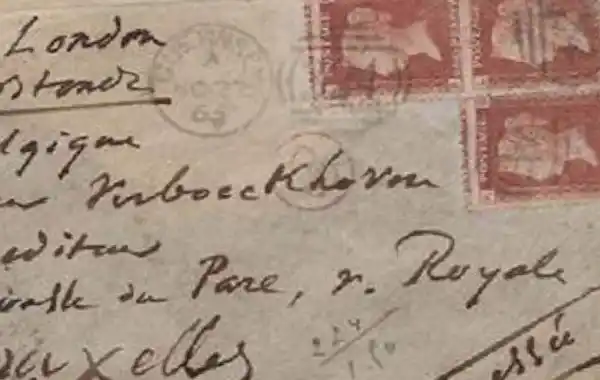06 November 2012
|
Find out more about the fascinating story of the Penny Red Plate 77 Stamp with collector Abed Najjar's controversial discovery of the incredibly rare plate number 77.
Find out more about the fascinating story of the Penny Red Plate 77 Stamp with Abed Najjar's controversial discovery of the incredibly rare plate number 77.
A decade ago, collector Abed Najjar discovered a scruffy cover bearing three 1d reds showing the incredibly rare plate number 77. Ever since, he has been trying to get it authenticated, causing many heated debates and disagreements along the way.
SIGN UP TO THE FREE ALLABOUTSTAMPS NEWSLETTER TODAY and we'll send you news, views and stamp guides direct to your inbox. It's completely free and we'll never share your data with anyone else.
The background to the very scarce Plate 77 1d red stamps, created more than 150 years ago, is still shrouded in mystery, but the following chain of events summarise the story:
• Preparation of plate 77 began on 3 July, 1861
• Plates 75 and 77 were rejected due to ‘irregularity of the placing of the heads.’
• Plate 77 was not put to press and it was partially defaced on 4 February, 1862
• A handful of examples of plate 77, perhaps samples or trial sheets, were found on the stamp market
In 2012, an example of a Plate 77 Penny Red sold for £550,000, proving just how valuable the cover could be, if it is the real deal. Many experts do not believe the cover is genuine, prompting Mr Najjar to carry out ground-breaking forensic research on the stamps.
British Library Plate 77
Less wealthy collectors can still see an example of the famous stamp at the British Library.
‘The stamp is one of only nine recorded, but today only seven have survived,’ explains David Beech, who oversees the vast Philatelic Collections at the British Library. ‘One example was dramatically lost in the 1906 San Francisco earthquake and another was reportedly stolen in 1965 and never seen again. The British Library has two examples; one unused in the Tapling Collection and one used in the Fletcher Collection.’
The ‘BA’ example in the Tapling Collection was the first to become a ‘public’ stamp in 1891.
‘As with most, if not all, philatelic rarities, forgeries or fakes exist,’ warns David.
‘In the case of the plate 77, fakes take the form of a plate 177 stamp with the 1 painted or scratched out, or other stamps (usually printed from plates 71, 72, 73, 74, 76, 78, 79) with an alteration made,’ he says.
‘It follows that a plate 77 should only be purchased with a certificate of expertisation.’







